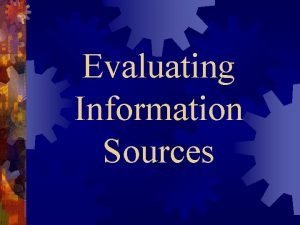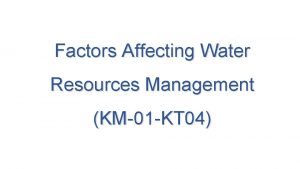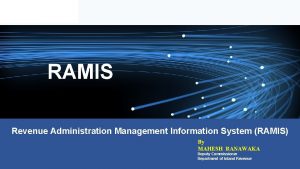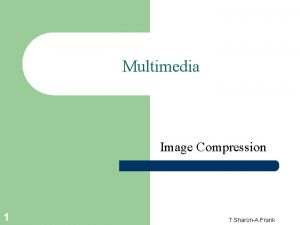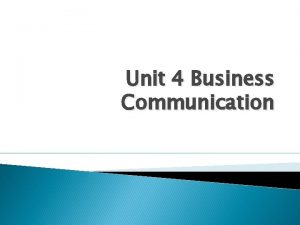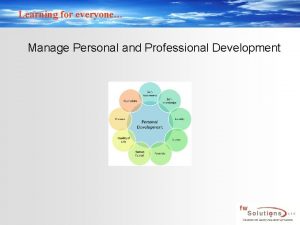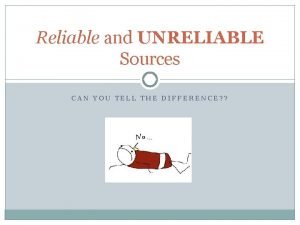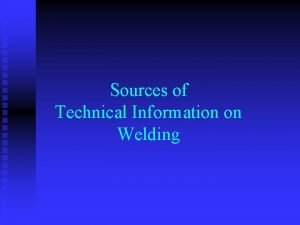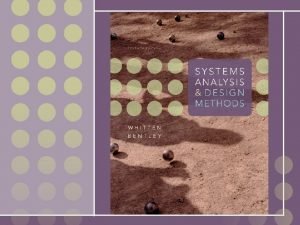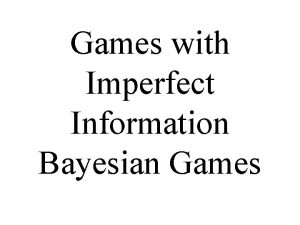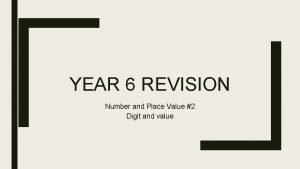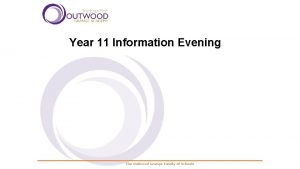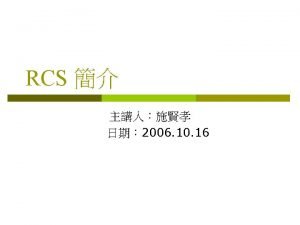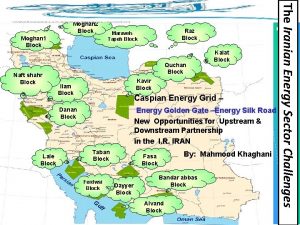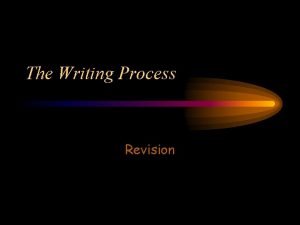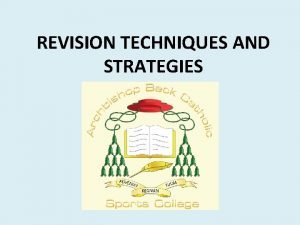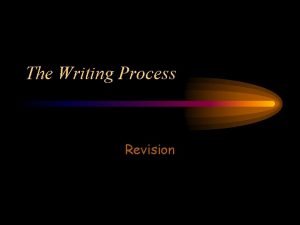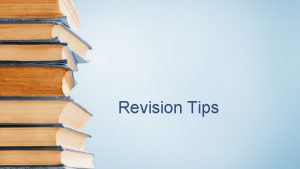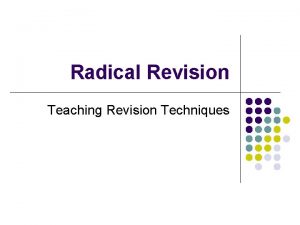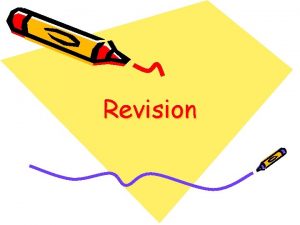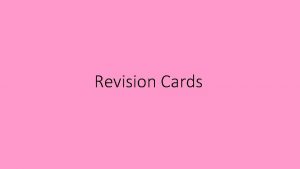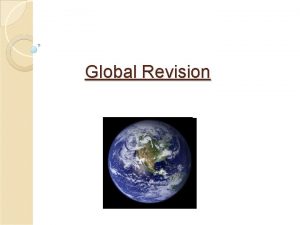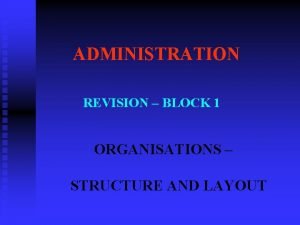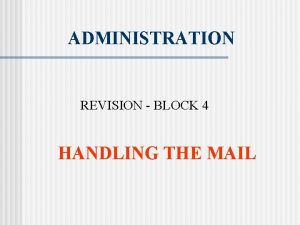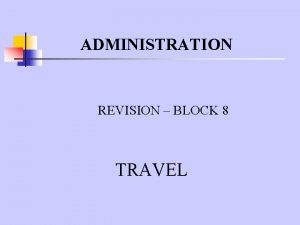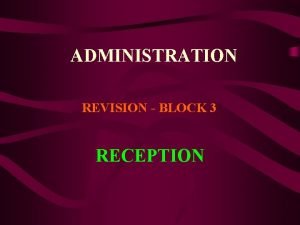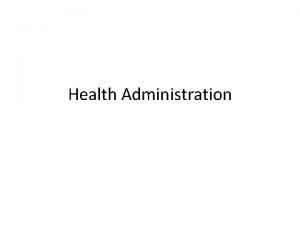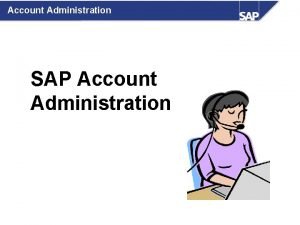ADMINISTRATION REVISION BLOCK 6 Sources of Information Sources

ADMINISTRATION REVISION – BLOCK 6 Sources of Information

Sources of Information In order for an organisation to function and carry out its business effectively it must be able to access information. Examples of information needed: Ø train/air/ferry timetables Ø road conditions Ø hotels Ø foreign exchange rates Ø telephone and fax numbers Ø up-to-date share prices

Where can organisations get access to this information? It is impossible for an employee to hold lots of information in their head. So organisations get information from various sources. Sources can be grouped into: Ø People Based Sources Ø Paper Based Sources Ø ICT Based Sources

People Based Sources Some examples are: Conversations - Ø by telephone Ø at meetings Ø face-to-face eg with line managers

Paper Based Sources Examples: Ø reference books eg Who’s Who Ø directories eg Yellow Pages Ø brochures Ø catalogues Ø manuals eg computer manuals Ø files eg customer records

ICT Based Resources Examples: Ø computer files eg spreadsheets/databases Ø e-mail Ø electronic diary for times of meetings Ø the internet for all kinds of information such as flight times Ø cd-roms

The Intranet Features: Ø an internal computer network eg the Mitel network you use in class Ø workstations are connected to a server Ø server stores all software and data Ø staff access is controlled by user codes Ø makes information available to users working for the organisation Ø software, files and printers can be shared

Advantages of an Intranet Ø employees have access to fast, up-to-date information Ø reduced software & printer costs Ø efficient communications using internal e-mail Ø software can be updated for everyone simultaneously Ø files eg databases can be accessed by many simultaneously

Disadvantages Ø staff training is essential Ø can be expensive to set up Ø when the network crashes, work may come to a stop

Some uses of the Intranet Ø Any documents frequently used eg price lists and staff newsletters, can be posted on the intranet Ø Newsgroups can be set up to exchange information Ø File sharing saves lots of time and inconvenience Ø Messages can be e-mailed

The CD-ROM The following are commonly supplied on CD-Rom: Census information – about the population Road maps and route finders Encyclopedia Back issues of quality newspapers Regional and social trends Magazines and journals

The Internet Ø Is a world wide communications network which can be accessed by anyone. Ø These networks are run by Governments, universities, and private companies Ø The Internet links vast numbers of computers and computer networks

To Access the Internet You need: Some services offered: Ø A computer Ø E-mail Ø A modem Ø www – world wide web – for access to more than 500 million pages of information Ø A phone line Ø An account with an ISP eg AOL Ø Communications software Ø ftp – file transfer protocol – users can “zip” files to save space and send to other users

Accessing the Internet Ø Large organisations can have direct access to the Internet. Ø Most individuals access through an ISP ie an Internet Service Provider Ø ISPs can allow internet access at local call rate Ø Different ISPs offer different deals eg monthly fixed charge for unlimited use

Finding Information (1) Ø Search engines eg Yahoo and Excite match ‘search’ words to opening words of a web site Ø Hyperlinks – words in blue on web pages which link to another page Ø URLs – Uniform Resource Locators or web addresses eg http: //www. made 4 it. co. uk

Finding Information (2) Ø Computer files eg word processing documents, can be sent as attachments on e-mail messages Ø Confidential information should be encrypted (put into code) before being sent over the net

Finding Information (3) Ø Home Page – This is the first web page a user sees when he/she accesses the www. Ø Web browser software – eg Microsoft Internet Explorer – accesses the www Ø Bookmarks – allow you to save addresses of sites you use often

Information Available Travel eg Scotrail, Eurostar Hotels eg Hilton Group, Stakis Weather Companies eg Companies Online Media eg Daily Telegraph, The Times English language eg Roget’s Thesaurus Government eg Department of Health Political parties General Reference eg Britannica Online Yellow Pages N. B Not all provide free access Financial eg Exchange Rate Share Prices

Creating a Website You must: 1 Rent space on the ISP’s host computer 2 Design the web pages 3 Place the pages on the host computer 4 Advertise the existence of the website

Now answer the following questions in sentences on paper please. 1 What kinds of information do organisations normally need to access? 2 What 3 sources can firms use to access information? 3 Give an example of a “people-based” source of information. 4 What is an Intranet? 5 List 2 advantages to an organisation of using an Intranet. 6 What is the Internet? 7 Name 3 things required to access the Internet. 8 What does ISP stand for? 9 In what form should confidential information be sent over the internet? 10 How could you let customers know you have a web site? Check your answers with the solution and note your score.
- Slides: 20


